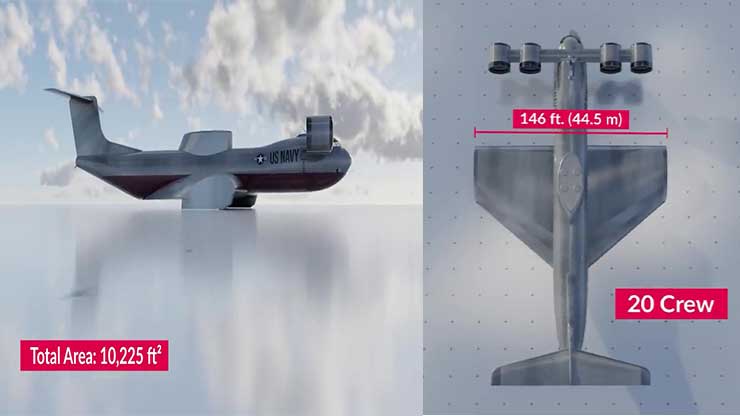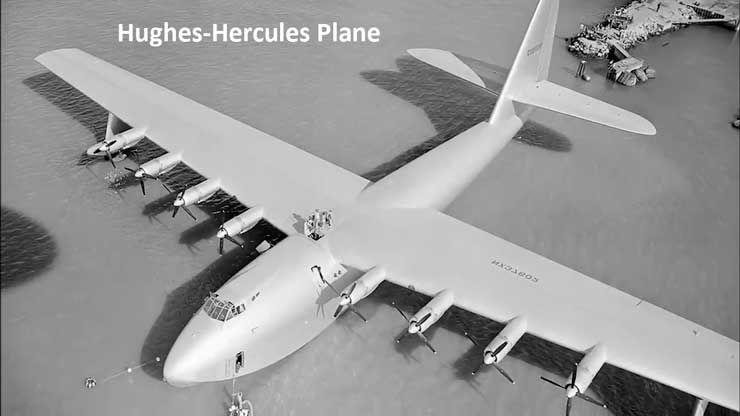Unwinding the Secret: The Deadly Secret Weapon of the Sea
Introduction: The Caspian Sea Monster Revealed
The Caspian Ocean Beast, A.K.A the USSR’s Ekranoplan, was not only an airplane; it was an earth-shattering accomplishment of innovation that sent shockwaves through the West during the Virus War. Accordingly, the US presented its rendition, the Standard Hairpiece, an essential hindrance outfitted with Atomic Pike rockets. How about we dig into the fascinating story of this American-made Ecrano Plane?
The Science Behind Ground-Impact Airplane
Understanding streamlined features is pivotal in valuing the Ekranoplan’s ability. Dissimilar to conventional airplanes, ground-impact vehicles like the Ekranoplan use a pad of air to fly simply over the water’s surface. This novel idea considers broadened trips at low elevations, a difficult accomplishment for customary planes.
How Ground-Impact Airplane Work
A ground-impact airplane accomplishes lift by coordinating push downwards under the wings, killing the requirement for high forward speed. Wingtip plates and motor position add to further developed lift, looking like a unique air pad around the specialty. This inventive innovation permits these airplanes to float simply above wave peaks, displaying their lethal effectiveness as an unmistakable advantage of the ocean.
Hairpiece versus Airplane: The Grouping Problem
Discusses persevere on whether to arrange hairpieces as boats or airplanes. While the UK thinks of them as airplanes, the U.S. and EU are inclined towards arranging them as boats. Regardless of the order banter, the Hairpiece airplane offers novel benefits, like flying at incredibly low heights, remaining beneath radar range, and conveying heavier freight with expanded eco-friendliness.
The Soviet Ekrano-Plane Task:
The Soviet Association started to lead the pack in Hairpiece airplane advancement with the Ekrano-plane KM, otherwise called the Caspian Ocean Beast. This goliath airplane, with a 295-foot length and a load of 600 tons, turned into the zenith of Soviet optimal design during the 1960s. Its replacement, the Lunar Chrono-Plane, flaunted six supersonic enemies of boat rockets, cementing its place in military history.
Design Structure of A deadly Secret Weapon of Sea:
The designers thought that they could fit the aircraft with a high number of smaller and nimble cruise missiles. However, this idea was quickly scrapped because it would have required the craft to get a lot closer to enemy territory. Here are some interesting statistics regarding the US Par-Wig plane. It would have 20 crew and a span of approximately 146 feet or 44.5 meters and a total area on board of 10 225 square feet or 3000 meters. In addition to this, it would come in with a weight of 2 million pounds or nearly a million kilograms and when it did not have any nukes on board, it would float at around 627000 pounds or 284000 kilograms.
Cruise Speed and Altitude:
The cruise speed is between 180 to 330 knots and can go up to 400 knots when the weather and water conditions permit. The cruise altitude is 12 feet or 3.65 meters.
 A deadly Secret Weapon of Sea – By militrayfacts.com
A deadly Secret Weapon of Sea – By militrayfacts.com
The aircraft could go easily up to 120 000 feet. Finally, the American Par-Wig 10 days loiter out at sea. So why was it never built? The US had no need for large wing and ground effect aircraft as they provide no significant military advantage, except for use in the Great Lakes area. The country lacks major bodies of water that could employ such a craft for strategic or tactical purposes.
Ground Effects:
The U.S navy covered both the Atlantic and the Pacific oceans with carrier battle groups and submarine fleets, which offered portable power projection for undersea, surface, and air operations virtually anywhere in the globe. So, in summary large wing and ground effect aircraft do not provide a significant increase in America’s power projection, when compared to existing options. In the early 1980s, there was a U.S navy plane to conduct flight tests using the Hughes-Hercules aircraft to study ground effects. It wasn’t expressly designed as an Ecrano-plane, but its enormous wings benefited from ground effects. You might recall that the only flight that it ever did never escape its ground effect, sadly that plan never came to be and we missed the opportunity to see the giant back in the air.

The American Reaction: Standard Hairpiece
Never ones to slack, the US presented the Standard Hairpiece, intended for ocean control and furnished with four Harpoon C long-range rockets. Despite its noteworthy capacities, including a 2000 nautical mile reach and fast, the Standard Hairpiece was never worked because of the U.S. Naval force’s current power projection abilities.
Configuration Design and Disadvantages
The Standard Hairpiece’s plan included a plump, thickset switched delta wing with one-of-a-kind push diverters for take-off. While it guaranteed fast and competitive edges, its drawbacks, like trouble in turning and docking, added to its possible deserting.
The Disastrous Finish of Ground-Impact Airplane
As the Virus War finished, ground-impact airplanes confronted difficulties. The sole excess Lun Ekrano plane in Russia was reused for regular citizen utilization yet met a sad end in a 1992 accident, upsetting the capability of these novel planes for nonmilitary personnel transportation.
Conclusion: A Heritage Disappearing
In the domain of military history, enormous low-flying airplanes like the American Standard Hairpiece neglected to give a critical lift to control projection. The interesting and intriguing period of ground-impact airplanes might be disappearing, leaving us with the leftovers of the once-strong Caspian Ocean Beast. If you found this data fascinating, let us in in the remarks or connect through email at [email protected].
Thanks for reading!
Acknowledgment:
A special thanks to found and explain, Omaze, Wikipedia and Google which helped me in collecting the relevant data.



